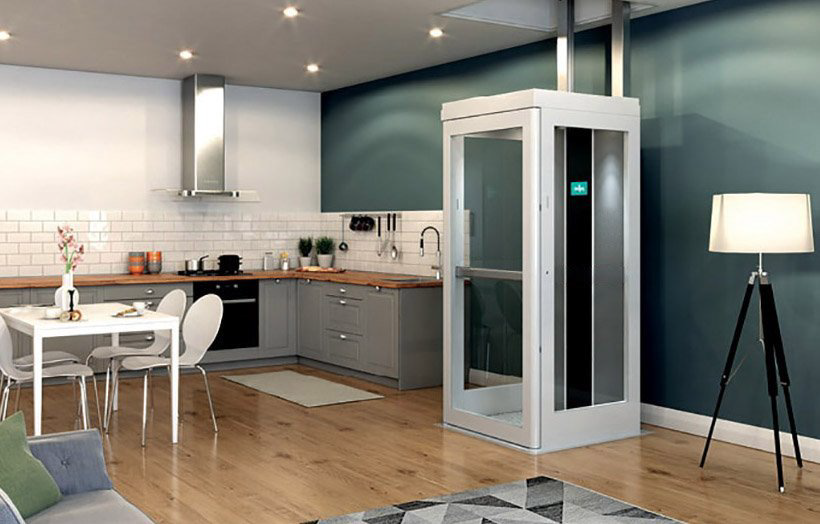Installing a lift in your home or building is a significant project, and it requires the expertise of multiple professionals to ensure everything goes smoothly. From planning to final commissioning, each step of the process involves specialists who can help you meet safety regulations, ensure proper installation, and create a functional lift space.
Here’s a breakdown of the key professionals you’ll need to work with when purchasing and installing a lift:
Architect
The first step in planning a lift installation is to work with an architect. An architect helps you design the space around the lift, ensuring it fits nicely into your building and gives you the carrying capacity you need. They’ll look at the size of the available area, how the lift will affect the building’s structure, and the aesthetic aspects of integrating the lift into your home or commercial space.
For new builds, the architect can design the space with the lift in mind from the beginning. For existing buildings, they’ll help with any necessary modifications to accommodate the lift.
Builder
The builder is one of the most important professionals involved in the lift installation process. Once the architect has provided the design, the builder is responsible for creating the space where the lift will be installed.
The builder will ensure that:
- The shaft or hoistway (the vertical space where the lift will operate) is built to specifications.
- If you are looking at saving money on the cost of your lift, consider asking your builder to build 2 or even 3 of the sides of the shaft with masonry (as opposed to steel and glass).
- Space is created for the machine room, if required.
- The surrounding area is prepared to house the lift’s doors, wiring, and mechanical components.
For residential projects, the builder ensures that the lift is integrated into your home safely and effectively. In commercial settings and especially class 2 and class 3 buildings, they help meet stricter building codes and standards.
Lift Installer
Once the space is prepared, the lift installer takes over. This professional works for or in collaboration with the lift manufacturer and is responsible for physically installing the lift system in your building. The installer ensures that the lift components – like the motor, cabin, and controls – are correctly assembled and fitted according to the manufacturer’s guidelines.
Lift installers also ensure that the lift complies with Australian lift standards, such as AS1735, which regulates everything from electrical safety to accessibility and load capacity.
Fire Safety Advisor (for Commercial Settings)
If you’re installing a lift in a commercial building (such as an apartment block, medical centre or office building), you’ll need a fire safety advisor to ensure the lift installation complies with fire safety regulations. This is particularly important for Class 2 buildings (such as commercial apartments), which must meet stricter fire ratings.
The fire safety advisor will ensure that:
- The lift shaft and surrounding structure meet fire-resistance requirements.
- Any fire doors or barriers around the lift area are installed correctly.
- The lift system includes proper fire evacuation features.
These precautions are critical in commercial buildings to ensure the safety of occupants in the event of a fire.
Lift Commissioner
After the lift is installed, it needs to be commissioned by a certified professional to ensure it is safe for use and meets all regulatory standards. The lift commissioner performs a series of tests to verify the lift’s functionality, safety, and compliance with Australian standards.
Key tasks of the lift commissioner include:
- Testing the lift’s emergency systems, such as alarm buttons and backup power.
- Verifying the load capacity and ensuring the lift operates smoothly.
- Confirming the lift meets accessibility requirements, including for wheelchair use.
- Ensuring the lift adheres to Australian safety standards (AS1735).
Once the commissioning is complete, the lift can be certified for regular use.
Other Professionals to Consider
In some projects, additional specialists may be required:
- Electrical Contractor: If the lift requires significant electrical upgrades or rewiring, an electrician will handle the setup and integration of the lift’s electrical system.
- Surveyor: A surveyor may be needed in more complex projects, particularly in multi-story or high-rise buildings, to ensure that the lift installation complies with local zoning laws and building regulations.
- Interior Designer: If aesthetics are important to you, an interior designer can help ensure the lift design complements the overall look and feel of your home or building, especially in custom lift installations.
Conclusion: Getting the Right Team for Your Lift Installation
Installing a lift involves multiple steps, from design and construction to safety testing and final certification. By working with the right professionals – architects, builders, installers, and fire safety experts – you can ensure that your lift installation is smooth, safe, and fully compliant with Australian regulations.
At Lift Experts, we’re here to guide you through the process. Our team works with a range of lift installers and manufacturers, offering independent advice to help you choose the best lift solution for your needs and budget. We also coordinate with your architects, builders, and other professionals to ensure the installation process goes according to plan.
If you’re considering a lift installation and want to know more about how we can help, feel free to reach out for a consultation today!

